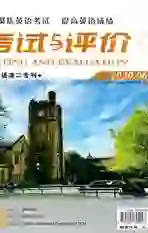Lady Dai's Funeral Banner
2020-09-10吴巍
吴巍
Lady Dai's Funeral Banner from Mawangdui
The Funeral Banner of Lady Dai is the most famous of marvels recovered from the 2,200-year-old Han Dynasty site of Mawangdui near Changsha, China. Three tombs at Mawangdui contained an astonishing array of silk manuscripts, materials saved by the unique conditions of the Li Cang family tombs. Lady Dai's tomb was the best preserved of the three, and as a result, scholars have learned a great deal from her and the artifacts buried with her.
The banner was found lying face down on top of Lady Dai's innermost coffin, attached by a suspension (懸挂) loop. The silk textile is 81 inches (205 cm) long, but if you add in the suspension cord and the tassels at the bottom, it measures 112 inches (285 cm). While the textile is called a funeral banner, and may have been carried in a procession, its ritual use is much debated (Silbergeld 1982): there is nothing else exactly like it in this context. A banner with some of the imagery is reported in Shih Chi, but it was a military banner, not for funerals. Book of the Later Han describes a mourning banner with a few of the images, but not the major ones.
Wu (1992) believes the banner should be considered with the entire burial, a significant part of the structure as a work of art, built during the burial process. That burial process included the Rite of Soul-Recalling, in which the shaman had to attempt to call the soul back to the body of the corpse (尸体) before they could bury her, the final effort of the living to revive the life of a family member. The banner, suggests Wu, represents a Name Banner, symbolizing the otherworldly existence of the dead Lady Dai.
The Representation of Heaven in Lady Dai's Banner
The broadest section of the T-shaped funeral banner represents heaven. The two dominant images are the red sun and crescent moon. In the red solar disk is a black raven; the crescent moon is facing both a toad (蟾蜍) and a jade hare. Between the sun and the moon is a kneeling figure with a long curling serpentine (蛇的) tail who is the topic of a large amount of discussion among Chinese scholars. This figure may represent the Taoist god Fuxi or his consort/sibling Nuwa. Some scholars argue that this figure is Zhulong, the “torch-dragon”, a human-faced serpent (蛇) and solar spirit. Others think it represents Taiyi, the ancient god of heaven, or someone dressed as Taiyi.
Below the sun disc are eight smaller discs which twine about the branches of what seems to be a mythical fusang tree. The multiple suns may represent the legend of the Archer Hou Yi, who saved the world from drought. Alternatively, they may representation a constellation of stars, perhaps the northern Big Dipper. Below the lunar crescent (新月) is the figure of a young woman borne aloft on the wings of a dragon, which may represent Lady Dai transformed into a xian immortal.
The bottom of the section has an architectural portal surmounted by spotted felines (貓科动物) and guarded by twin male doormen, the Greater and Lesser Lords of Fate, guarding heaven's gate.
Lady Dai and Her Mourners
In the first section below the T-top is Lady Dai herself, leaning on a cane and surrounded by five mourners. This is one of three possible images of the deceased woman, but it is the one that scholars are agreed on. The tomb occupant, possibly named Xin Zhui, was the wife of Li Cang and mother of the individual in Tomb 3. Her cane was buried with her, and the autopsy of her very well-preserved body revealed she suffered from lumbago (腰痛) and a compressed spinal disk.
Banquet for Lady Dai
Beneath the scene of Lady Dai and her mourners is a bronze clasp and two human-headed doves. The doves rest on the roof of a banquet or ritual setting with several male figures sitting on couches and surrounded by a number of bronze and lacquer jars. Silbergeld suggests this is a banquet in honor of Lady Dai. Wu interprets this scene instead as part of a sacrifice, that the five men in two opposing rows raise their arms towards an object in the middle which sits on a low stand and has a soft rounded top edge. This softly rounded image, says Wu, represents Lady Dai's body bound in layers of cloth, just as she was when she was found in her coffin.
The Han Dynasty Underworld
The bottom panel of the funeral banner is dedicated to the underworld, including two giant fish, representing symbols of water. A very muscular central figure stands on the backs of the fish, supporting the banquet in the previous image. Also illustrated are a serpent, turtles, and owls representing the animals of the depths. The white rectangle on which the banquet takes place is thought to represent the earth.
